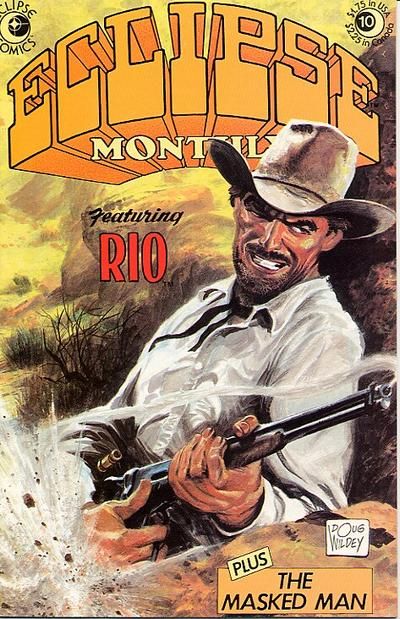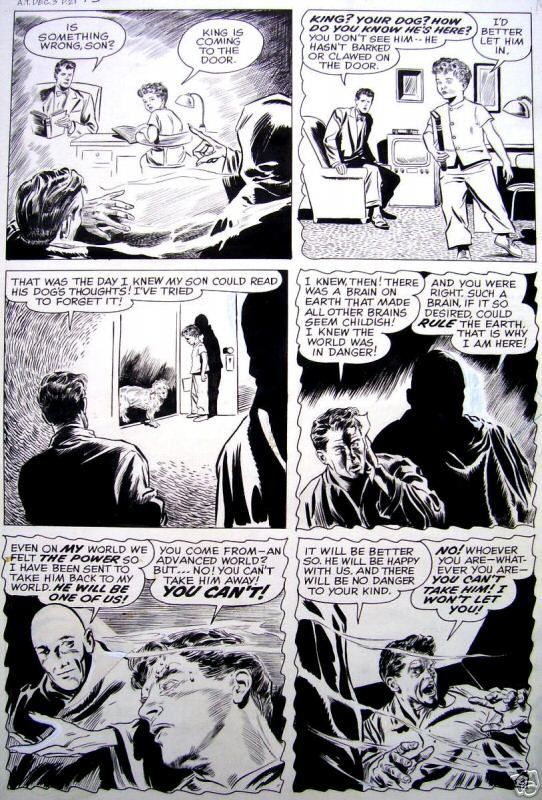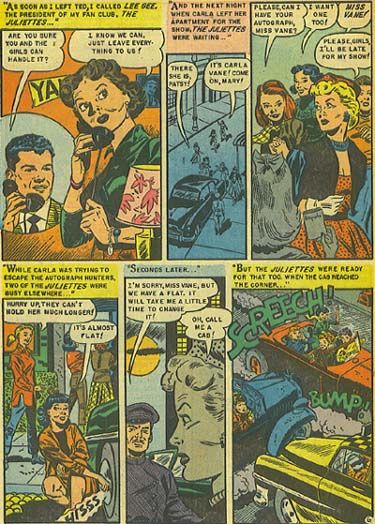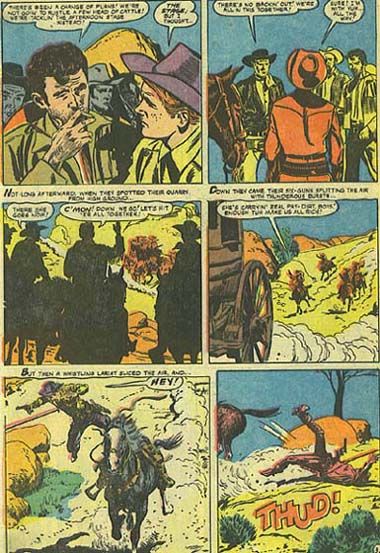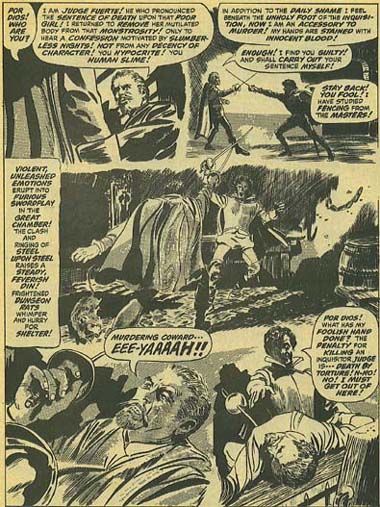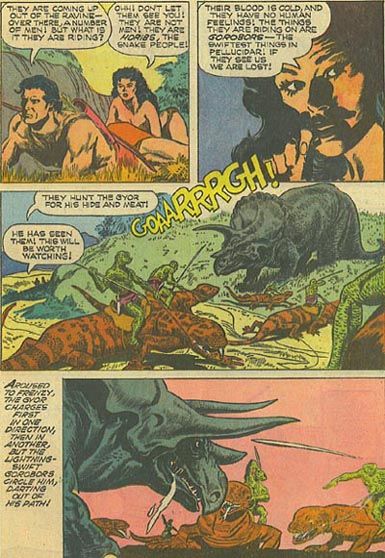Here's another piece by Scott - BC
We are back with another edition of the Underappreciated Artist Spotlight. This time, let's focus on a man who might not be well known to those fans who do not venture outside of the capes and tights genre.
Doug Wildey is probably best known for creating Johnny Quest (a DVD that I love more than any other), but he also provided quality artwork to a number of different companies.
Like many artists of his generation, Wildey's early work seems inspired by Caniff (not a bad thing!), but over time his pencils really matured and he developed a very distinctive style. There is a real confident lushness to his artwork, especially when he is providing the inks as well.
I was a late comer to the Wildey Appreciation Society, but I try to get my hands on anything he's ever worked on. If you need a good jumping off point for Wildey art, look no further than Rio (or the Rio sequels).
It may be the best western I've ever read and the painted artwork is a thing of beauty.
I'm lucky enough to own a piece of Doug Wildey original art - it's a page from the late 50s Harvey horror title, Alarming Tales. I just love it - but if someone ever wanted to trade for a Rio page (heh, heh!).
Aside from the Rio work, other inexpensive options for checking out Doug Wildey's artwork include Comico's Johnny Quest Classics from the late 80s, and the Outlaw Kid reprint book from Marvel published in the 70s. That will give you a sense of Wildey's mastery of the craft.
I often wish he'd done more work in mainstream comics, and I would have loved to see him tackle a WW2-era Captain America or Unknown Soldier. He also would have been a perfect fit for Sandman Mystery Theatre.
Here are some more examples of Wildey's work from a variety of genres:
1. Daring Confessions #8 (Youthful, 1953)
This is very early stuff - you can see a lot of Caniff in there, but he is showing that he is interesting is experimenting with layout.
2. Outlaw Kid #18 (Atlas, 1957)
This is just a typical page from Outlaw Kid - showing a mixture of dialogue and action. By this stage, Wildey's had come into his own style and his work on this title was spectacular (became a long-running Marvel reprint titles in the 70s). I like his use of silhouettes (something his friend and colleague Alex Toth excelled at). In his western work, Wildey was very good at showing tough guy facial expressions like a sneer or scowl.
3. Nightmare #5 (Skywald, 1971)
Who knows how Wildey ended up contributing to the Skywald line, but they are lucky he did. This page shows his innovative layouts - I really like the free flowing panel borders. The black and white really enables his pencils to jump off the page.
4. Tarzan #180 (Gold Key, 1968)
It's not easy following in the steps of the likes of Foster, Hogarth and Manning but I truly believe that Wildey did a superb job on Tarzan during his short tenure on the strip. He did not copy anyone else's style, and really put his own stamp on the strip. This page is from Lost in Pellucidar storyline and it showcases Wildey's ability to mix jungle action with prehistoric fantasy. You know you are dealing with a strong artist when in the midst of all of this action; the strongest panel is the close-up on the woman's face.
I could include more, but this should provide everyone with a taste of what Doug Wildey had to offer.


